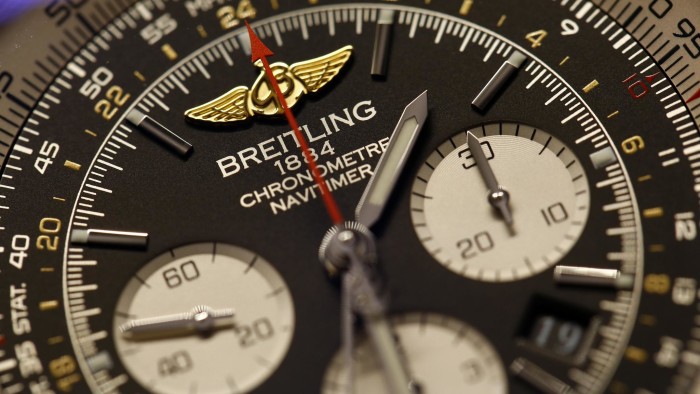Baselworld 2014: day four

Roula Khalaf, Editor of the FT, selects her favourite stories in this weekly newsletter.
The trend that won’t go away
The Oxford English Dictionary defines a “trend” as “the direction in which something is developing or changing”. There is usually much talk of trends at Baselworld, but this year’s vibe is more about brands working with what they’ve got in order to refine and improve the type of watches that, quite simply, plenty of people want to buy.
Few horological trends have proved so consistently successful as that of the chronograph wrist watch that was invented by Gaston Breitling almost a century ago and was soon adopted by wartime pilots who appreciated the convenience of not having to fumble for a pocket watch while wearing their cumbersome flying gear.
By the late 1930s, Breitling had been made official supplier to the Royal Air Force, and the development of the chronograph during the second world war resulted in numerous makers offering the complication in their line-ups from 1950 on.
It only takes a stroll around this year’s Baselworld to demonstrate that the watch aficionado’s love of the “chrono” is stronger than ever, despite the fact that most people who wear such pieces rarely have need of their elapsed time “stopwatch” function.
But the fact that the complication symbolises mechanical kudos, creates an interesting-looking dial, offers the opportunity for quirky variations, and might even be useful once in a while means that few serious brands would consider attending the show without having one or two new chronograph designs up their sleeve.
Breitling, for example, always majors on its chronograph lines and this year unveiled new versions of aviator favourites the Navitimer and Chronomat, while also fielding revamped versions of its popular Breitling for Bentley drivers’ models.
Patek Philippe, meanwhile, is offering its Reference 5960 annual calendar chronograph in steel for the first time at £36,920 (the platinum version costs £64,000) while Jacob and Co, previously best known for its “bling” watches, is stating a newfound horological integrity with its Epic X chronograph, which is powered by a vintage Venus 175 movement from the 1940s – regarded by many as one of the finest chronograph movements ever created.
Analogue watches must get smart
While the majority of visitors to Baselworld are convinced that the traditional analogue watch will remain in demand for decades, if not centuries, there are those who believe the next generation might be less enthusiastic about conventional hands and dials, having been raised in an era of digital-based smartphones, touch screens and wireless interfaces.

Most diehard horophiles do not just regard digital watches with disdain, they will not even speak of them in the same breath as their beloved, analogue pieces. But some of the more forward-thinking brands are devising methods of combining analogue displays with wireless applications.
Leading the field is Casio, which chose Baselworld to unveil its latest Edifice sports model, a watch with a conventional time display that also offers wireless connectivity to a smartphone, tablet or other mobile device.
At this stage, the principal advantage of Casio’s “Multi Mission Drive” synchronised watch is that the Bluetooth link enables precise time correction and alarm setting via the phone’s screen. It is also capable of synching with the phone so that it automatically adjusts to different time zones.
Further applications are currently being explored.
True to type
Producing watches that are instantly recognised far and wide is generally considered to be a good thing. But when the look of your dial is so specific that the smallest change leads to a loss of identity, it is time to start thinking of a new idea.
Entry-level watch brand Mondaine was facing such a problem with its signature Swiss Railways watches, which are perfect miniaturisations of its minimalist clocks found in the country’s railway stations. Although the design continues to be a strong seller, the firm’s concerns that it might become viewed as something of a one-trick pony has led to a new model based around an equally iconic Swiss creation – the Helvetica typeface.
The Helvetica One, launched at Baselworld, uses the typeface on the dial and also incorporates the Helvetica-style figure one into the design of the strap lugs. The watches are available in various sizes with a choice of “light”, “regular” and “bold” designs and cost from £230-£325.
“The designers spent more than a year looking for a way of incorporating something unmistakably Swiss into a new watch design,” says Derek Salter, Mondaine’s UK brand manager.
“Eventually, the Helvetica type face stood out as something that is both irrefutably Swiss and recognised around the world. It has even been adapted for Chinese.”
Comments